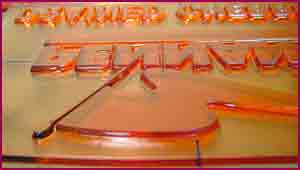Offset means the image is not printed directly onto but offset onto another roller before being
transferred to the substrate to be printed.
This means the image on the plate is the normal way around, reversed when transferred to the middle or’blanket cylinder’ and finally the right way again when on the material to be printed.
The right balance of water and ink is essential to get an even coating of ink on the image plate.
The machine sizes can range from the size of an old mini to the size of 4 double decker busses..and more!

Rotogravure is similar to offset litho in that the image plate is wrapped around a cylinder.
However the plate itself is made from copper and etched in a different way (intaglio) that gives greater durabality
for longer print runs or tougher substrates. (the material printed on)
Denser ink coverage. Box packaging. Everything dots to hold more ink.
The roller with the Copper etched plate dips into an ink bath and the excess inked scraped
off before the image is transferred directly from the plate to the print substrate from the inked roller.
Typical products that are rotary printed are carton packaging, floorings, laminates, bank notes... large quantity.


• Lithography (Litho) PLANOGRAPHIC
Etched aluminium plates on a cylinder transfer ink to an ‘offset’ rubber blanket roller and then to print surface.
Sheet fed or Web fed.
• Rotogravure (Gravure) INTAGLIO
Copper plates (with mirror image) transfer ink directly to print surface, usually rolls. Advantage, plates are more durable and so are good for long print runs. Sheet fed or Web fed.
• Flexography (Flexo) RELIF
A positive, mirror image rubber polymer plate, on a cylinder, transfer ink directly to print surface. Usually roll feed.







